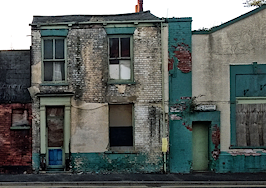Purchasing an “as is” condition property in need of a lot of work can be a smart investment, or it can quickly turn into a money pit. If an investor decides to go that route, the first decision he or she will need to make is whether to undergo renovation work to make the property not only livable but enticing, or if the entire home needs to be torn down.
Experts in the real estate space shared a few key things to consider and look out for when considering your options.
Bobby Montagne, the CEO of Walnut Street Finance, put together a blog post outlining crucial points when deciding whether you should tear down the as-is property you just purchased, or try to fix it up.
First, you need to set a budget. A couple of small fixes can increase the value of a home and come at a low cost, but a full rebuild can prove much more costly. You should always allocate additional money for overages.
“If you’re sure you’ve got enough, that’s great,” Montagne wrote. “But remember – if you run out of money during a rebuild, your partially-built house could turn into a massive money pit.”
Montagne also said that time is a significant factor. If it’s going to be a primary home and you need to move in quickly, you might not have time for a full rebuild, but if it’s an investment property that doesn’t need to be occupied right away, you can take the time.
Buyers should also consider different financing options. If you’re looking for a full rebuild, you can get a construction loan, which can be issued in installments, meaning investors can move through the different phases of a project without worrying about money running out.
Elliott Oliva, a Realtor with Keller Williams Realty-McLean, said an important thing to look at, when deciding whether the property can be renovated, is the foundation.
“If we have a donor property that could go either way we have an engineer come out to drills holes next to each exterior wall and inspect the footings to determine if it can support a new second floor,” Oliva said. “If it cannot, we talk about underpinning and the cost associated with it and make sure the numbers are in line.”
Oliva also said that when you’re building a new home, there’s a lot of costs to factor in that you might not immediately think of when debating between the two methods.
“Keep in mind, out here when you build new, you also have to factor site work that includes, demolition of donor property, capping utilities, excavation, grading and of course pouring an all-new concrete foundation,” Oliva said. “That’s about $80,000-$100,000 in addition to building and finishing out the house.”
Sometimes, the home’s historic architecture and age play a big factor in the actual price of the home, in which case, no matter the condition, you just can’t tear down. New Orleans, for example, is full of homes like that, according to Chris Smith, a Realtor with Gardner Realtors.
In the French Quarter, some homes are more than 160 years old, for example.
“You would never, ever, under any circumstance, ever, be allowed to tear down [those homes], no matter how poor the condition was,” Smith said.
Even if a property is in really rough shape, Smith says they try to save whatever they can.
“Most everything is fixable,” Smith said. “There are times when there’s so much wrong the property foundation-wise, termite-wise, wood rot, water rot, fire damage, that the only thing that’s salvageable is the facade or the interior wall. But overall, we go to great lengths to save, restore, salvage, what we already have.”
In certain markets, like Boston, professional advice on a major renovation or teardown must be guided by the local approval process. Bill Wendel, a real estate consultant in Boston, said he recently met with a local building inspector about designing and building a “shack,” listed at more than $1 million.
“Given the potential of a prolonged public process, and potential neighborhood opposition, our buyer withdrew their interest in the property,” Wendel said.
The property, listed for $1.1 million, ultimately sold for $960,000.





